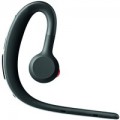Connection
—
Mini-Jack (3.5 mm). Mini-Jack is one of the most popular wired connectors. However, it is not used in Bluetooth headsets, and it is extremely rare in other specialized accessories and predominantly is an auxiliary feature. So, in speakerphones, mini-Jack is usually responsible for connecting several devices to each other, and in car kits, for outputting sound to the radio or standard car acoustics. Note that in this case, the headphone jack is not considered a 3.5 mm jack, although it is most often performed in this format.
— USB A. The classic USB A computer connector, which is gradually being replaced by the USB-C connector. The meaning and application of this connection depends on the type of device. So,
USB in speakerphones is a standard port for wired connection — both to computers and to specialized communication systems. And in Bluetooth headsets, this means that it is equipped with a USB adapter for connecting to a PC without a Bluetooth module.
— USB-C. A port similar in purpose to the one described above, but with a different, more modern, symmetrical shape that does not require specific connection, and correspondingly increased speeds.
—
Bluetooth. Nowadays, Bluetooth is actually the standard interface for wirelessly connecting headsets and other audio accessories to gadgets. This technology is not only well suited for audio tra
...nsmission, but can also be used for additional functions such as remote control. Features vary by version, the latest being Bluetooth v5. The communication range in this case can reach 10 m, and built-in Bluetooth modules are available in all modern smartphones, most phones, tablets and laptops, they can also be used in PCs and many other types of gadgets.Range
The maximum distance from the headset to the signal source at which it can be used normally.
Note that this indicator is stated for optimal conditions; the actual communication range is often lower than the claimed one due to obstacles in the signal path and extraneous interference. However, the minimum range for Bluetooth accessories is actually
10 m, which in fact, usually, gives at least 5 – 6 m — and this is quite enough for comfortable use. There are also more "long-range" solutions, with a range of
up to 50 m or
even more. However, it is worth remembering that Bluetooth is a two-way communication, and the range claimed in the specs must be supported not only by the headset itself, but also by the device with which it is used.
Also note that a long range means not only the ability to communicate over a long distance, but also a good ability to work through obstacles such as thick walls. Therefore, a powerful Bluetooth device may be necessary even at a short distance — if there are obstacles at this distance.
Impedance
The nominal impedance of the earpiece or speaker installed in the device. This parameter is indicated in the specifications extremely rarely, and even in such cases it is purely for reference: the hardware of the device is initially optimized for the corresponding headphone/speaker impedance.
Power source
The type of power used by the device. This parameter is indicated only for models with an independent power source: these are absolutely all Bluetooth headsets (see "Device"), as well as most speakerphones and some car kits (the last two varieties can also be powered from an external source — for example, from the on-board network of a vehicle or USB port).
Almost all self-powered devices run on built-in batteries, often non-removable ones. Such batteries can be made small and at the same time capacious, and their shape can be different — this makes it easy to integrate such a power source even into a miniature headset, not to mention larger accessories.

